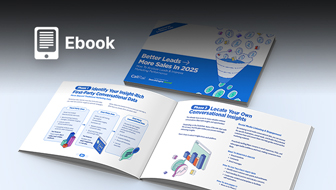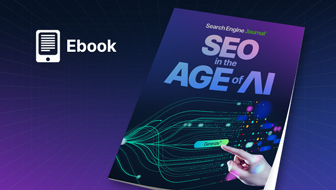COVID-19 has disrupted our world like nothing we have seen before.
The response requires some reflection, planning, and aggressive execution.
Milestone Inc. has developed and begun implementing the COVID-19 Crisis-Recovery-Growth strategy and shared it with the community through a Search Engine Journal webinar I moderated on April 8.
Milestone’s CEO Anil Aggarwal and VP of Marketing Erik Newton discussed insights on how to overcome the business impact of COVID-19 with the help of SEO tactics.
Here’s a recap of the webinar presentation.

In times of crises or downturns, marketing budgets are often the first to get cut within a company.
This shouldn’t be the case.
Every business needs to set up a crisis recovery plan that will allow them to operate amid the current pandemic – and marketing, when done right, actually plays a big role on this.
Companies should look into adopting a COVID-19 Crisis-Recovery-Growth Framework similar if they want to overcome the business impact of this pandemic.
COVID-19 Crisis-Recovery-Growth Framework
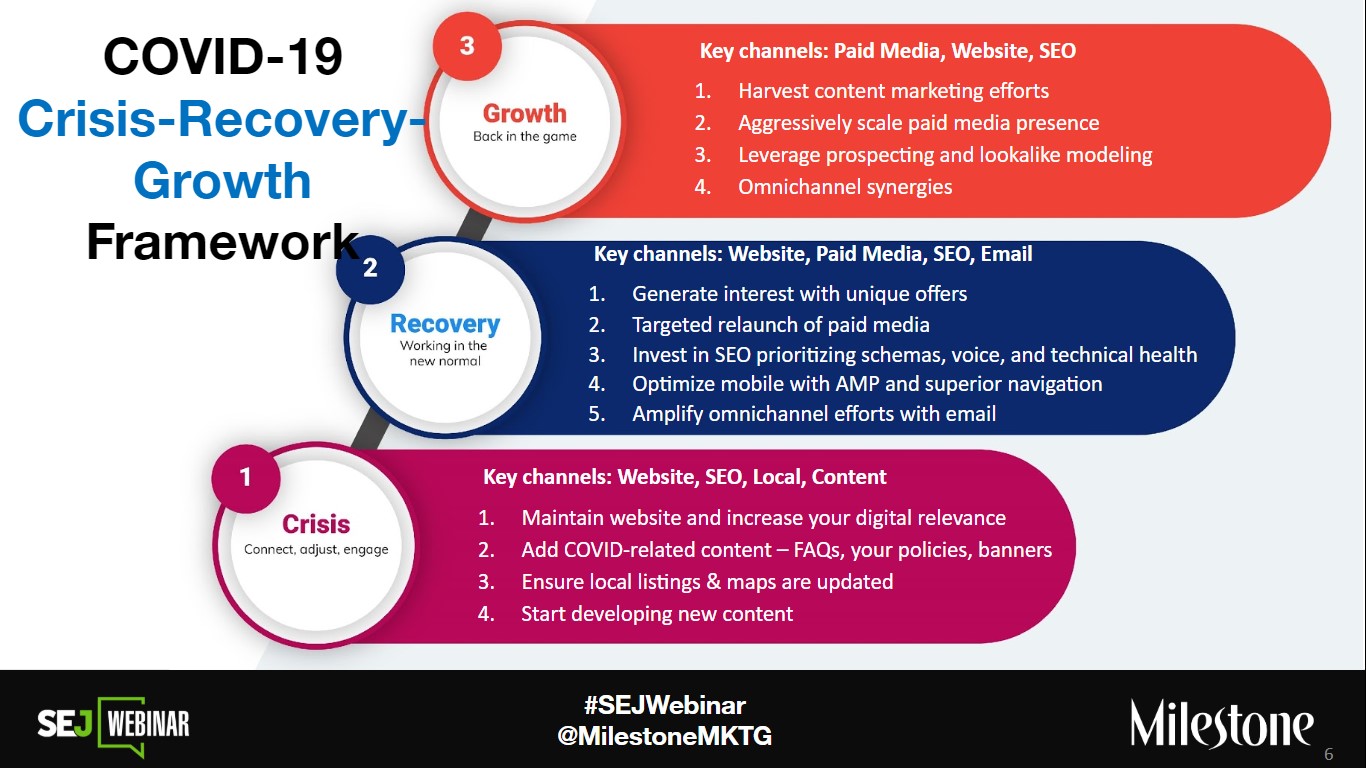
This Crisis-Recovery-Growth (CRG) Framework is a typical integrated omni-channel approach to thinking about how we do marketing.
But what’s different is that we have prioritized different channels at different phases during the CRG process.
Crisis: Connect, Adjust, Engage
Key channels: Website, SEO, Local, Content
In this phase, businesses should:
- Maintain website and increase digital relevance.
- Add COVID-related content – FAQs, your policies, banners.
- Ensure local listings and maps are updated.
- Start developing new content.
Recovery: Working in the New Normal
Key channels: Website, Paid Media, SEO, Email
During recovery, we listen to our customers in order to find out how to tune the business and figure out how to package what we’re offering to our customers in the most effective way.
This involves:
- Generating interest with unique offers.
- Targeted relaunch of paid media.
- Investing in SEO prioritizing schemas, voice, and technical health.
- Optimizing mobile with AMP and superior navigation.
- Amplifying omnichannel efforts with email.
Growth: Back in the Game
Key channels: Paid Media, Website, SEO
- Harvest content marketing efforts.
- Aggressively scale paid media presence.
- Leverage prospecting and lookalike modeling.
- Omnichannel synergies.
Chinese Economy Recovers from COVID Rapidly, Unevenly
On March 10, the Harvard Business Review reported that China appears to be in the early stages of recovery six weeks after the initial outbreak.
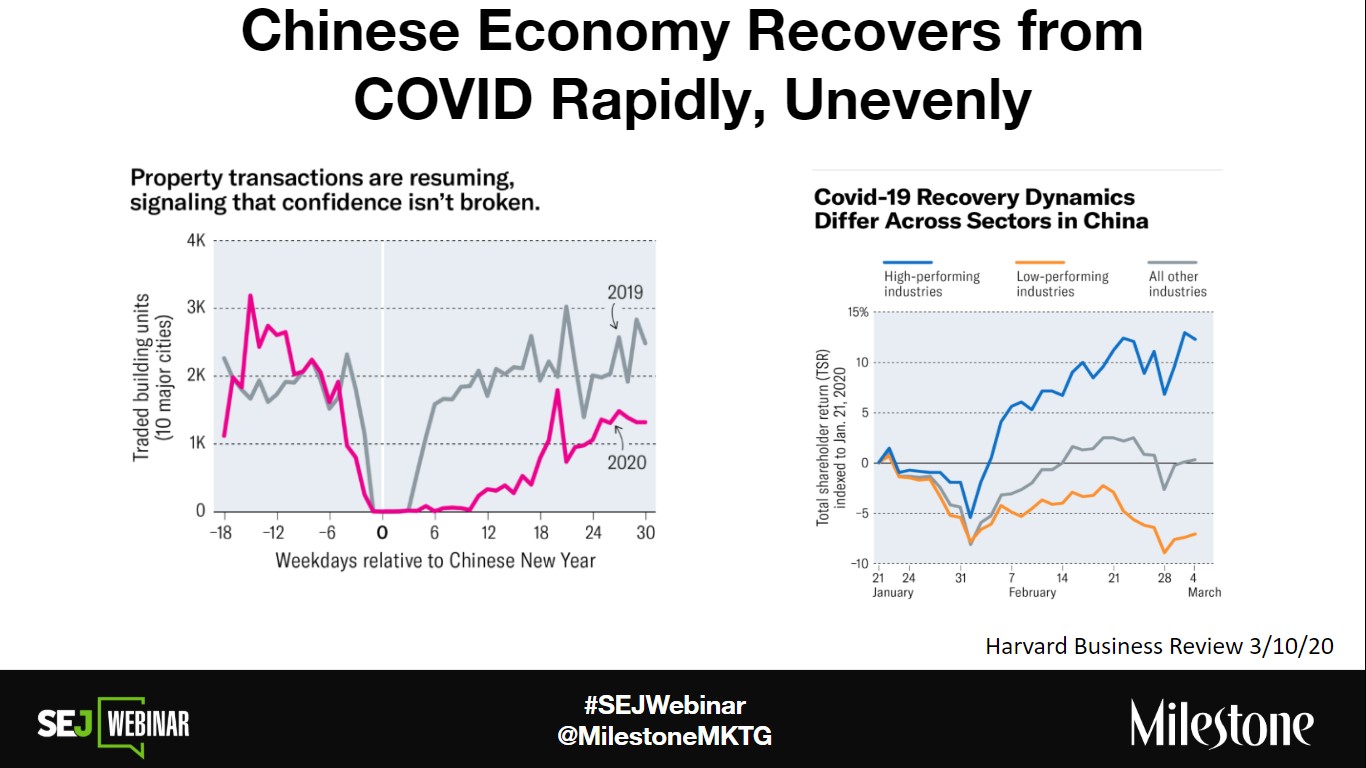
While property transactions are resuming, COVID-19 recovery dynamics differ across sectors in China.
There will certainly be winners and losers who are performing better and worse.
You need to adapt your business as early as now to keep you on the high side of your industry and recovery line.
Crisis & Recovery: Focus on 5 Key Tactics
The crisis and recovery phases should focus on:
- Offers
- Local
- FAQs & Voice
- Schemas
- AMP
1. Develop On-Point Offers
The first thing that you should think about immediately after the scrambling that all companies had to go through in the early weeks is to develop even better offers and packages for your customers.
The way to do that is to:
Listen, Understand & Match What Your Customers Need With What Your Business Can Do in Crisis Phase
Identifying problems, concerns, limits, and needs matter now that things are disrupted and changing so quickly.
Check Google Trends, site search, customer service logs, forums, social, and trends in other countries.
Start Planning & Testing Offers for Recovery
Some areas you can look at include:
- Service: Hours, video, delivery, in-home.
- Products: New menus, bundles.
- Incentives: Free trial, status, membership, subscription.
- Payment: Deferral, debit, credit, Venmo, Bitcoin.
- Messaging: Headlines, images, FAQs, CTAs.
Case Studies
Crisis: [Offer, Site, Local] Papa John’s No Contact Campaign
Problem: Essential pizza service realizes customers have concerns about virus transmission on pizza, box, and from the deliverer.
Solution: Develop a no-touch production and delivery method to allay fears. They also created a webpage explaining their approach. Their local information is also up-to-date and includes all delivery partners.
Missed opportunities:
- People Also Ask questions for “no-contact”are not showing up.
- Meta description not updated, Google ignored, used landing page text.
- No schema code.
- No FAQ section on site.
- YouTube video of TV ad not up yet.
Crisis: [Re-offer, Site, FAQ, Social, Video, Schema] Best Buy’s Contactless Curbside Pickup
Problem: Shelter-at-home is a great sales opportunity for TVs and home theater, but people were nervous about shopping.
Solution: Repurpose and promote an existing pick-up service to fit with the crisis times.
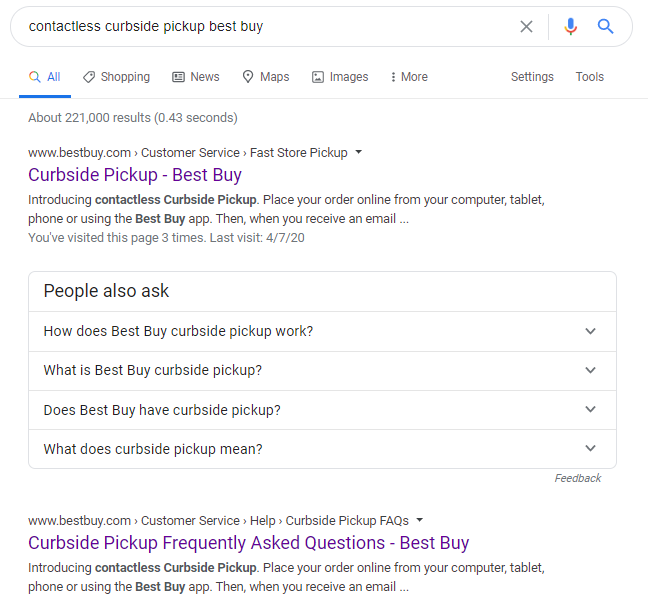 Missed opportunities:
Missed opportunities:
- More schema types could have been implemented.
- There’s a website as well as a YouTube video, but they are not showing up in the SERPs.
2. Schemas
The way Google understands language is greatly assisted by schemas.
Schemas are a way to add a lot more information to your website without exposing it on your website to your customers.
It’s data that is for the crawlers to pick up and use that information to add you to their Knowledge Graph.
Do schemas correlate to increases in rank, impressions, and traffic?
Milestone thinks so.
Based on 9,400 schema deployments, they found significant gains of +20-30% – with an average of:
- 40 schema types.
- 130 attributes and properties.
Schemas are always evolving. To date, there are 818 types and 1,324 properties.
There is also a new schema for COVID-related critical announcements and events.
Other relevant schema:
Structured data markup enables search engines to understand the context of website content.
However, it isn’t that simple to implement. Deployment challenges include:
- Architecture and code complexity, ~750+ lines per page.
- Schema.org and Google deprecation, additions.
- Significant I.T. resources needed to deploy and maintain.
Milestone’s solution for these issues is their schema development nesting strategy.
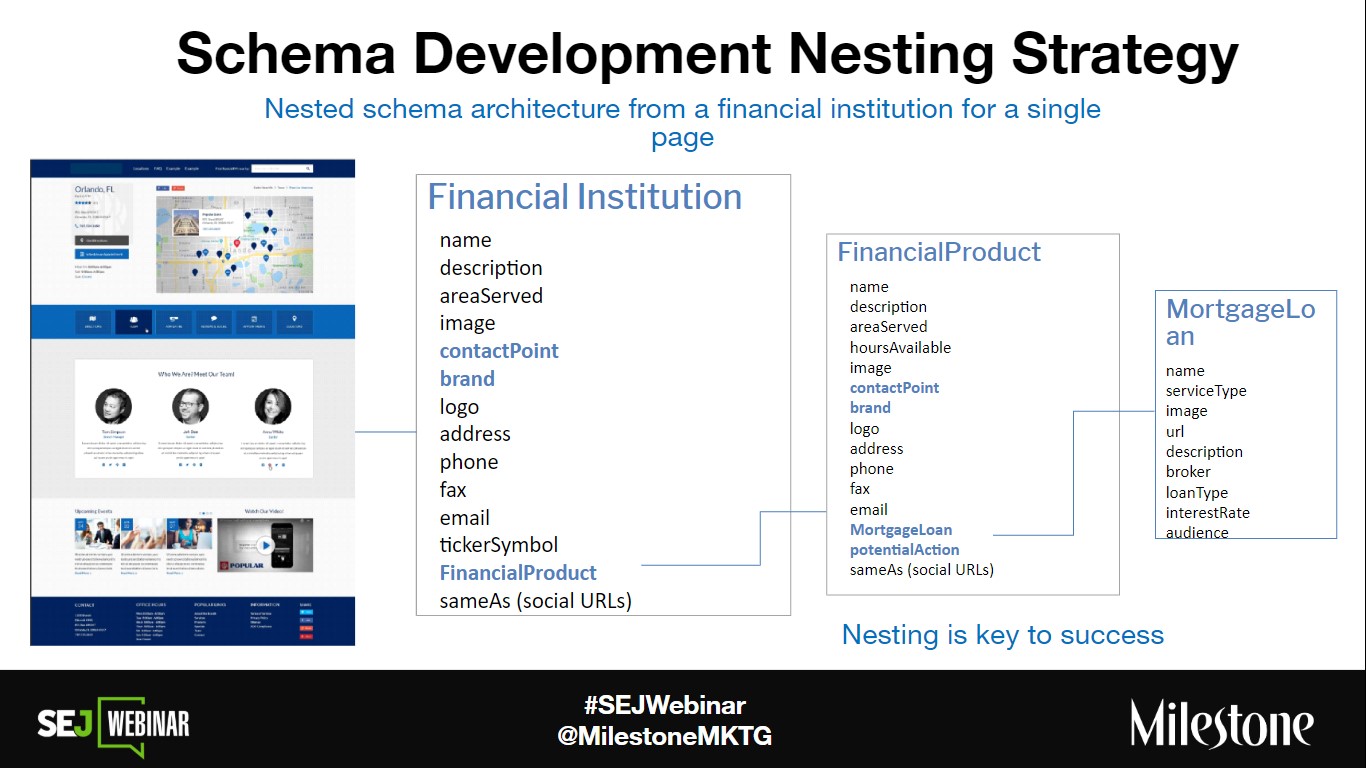
Above is an example of how they build out the structured data in nested format.
This demonstrates the need to markup each product with schema and relate it back to the organization.
Case Study
Restaurant Chain Schema Deployment on Adobe Experience Manager Website
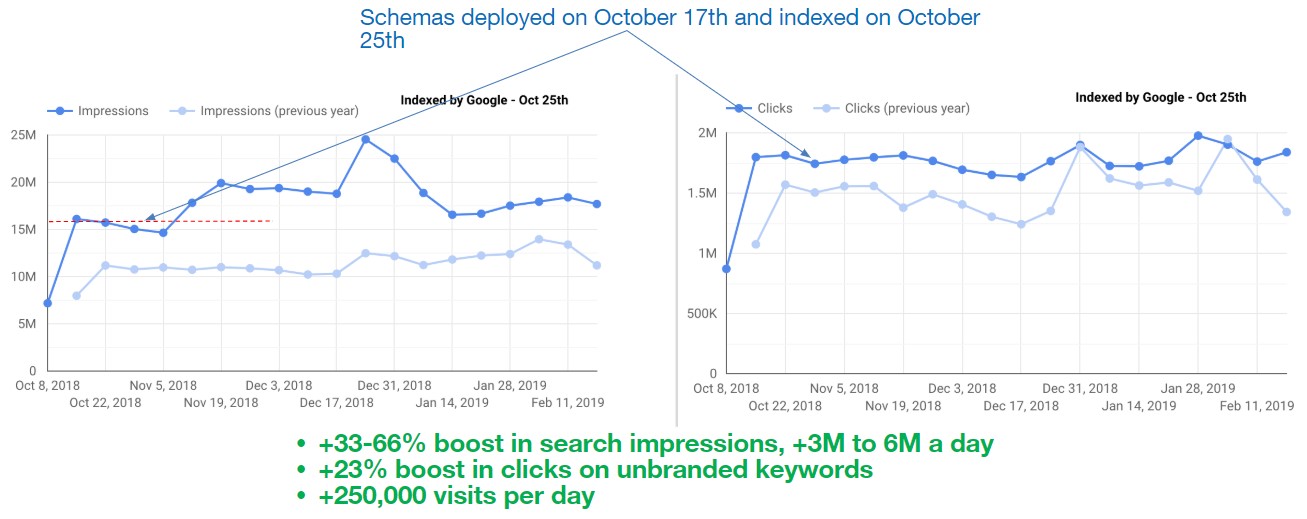
This restaurant chain experienced a dramatic lift soon after schema were deployed.
- +33-66% boost in search impressions, +3M to 6M a day.
- +23% boost in clicks on unbranded keywords.
- +250,000 visits per day.
Schema markup was first deployed on Menu pages and then added to all location pages.
Now, they are in the process of scaling to international locations.
B2B Enterprise Schema for VMWare
Problem: Build a foundation for entity-based search and voice search, increase rank and traffic.
Solution: A robust schema implementation without impacting internal IT resources, maintainable.
Results:
- Impressions: 24% increase.
- Clicks and visitors: 30% increase.
- Quick answer impressions went up 170%.
- People Also Ask went up 115%.
- Equivalent marketing value of over $300k.
3. Local
Local listings and knowledge panels have high visibility.
Whether you are a location-based business, an enterprise or a corporate entity, there’s a huge opportunity when you keep your Google My Business (GMB) profiles updated.
It’s especially important to take control of that in the current environments just as you would manage your website because a lot of people are getting their information straight from Google’s Knowledge Graph.
Here are a few examples of up-to-date local listings showing up on the SERPs.
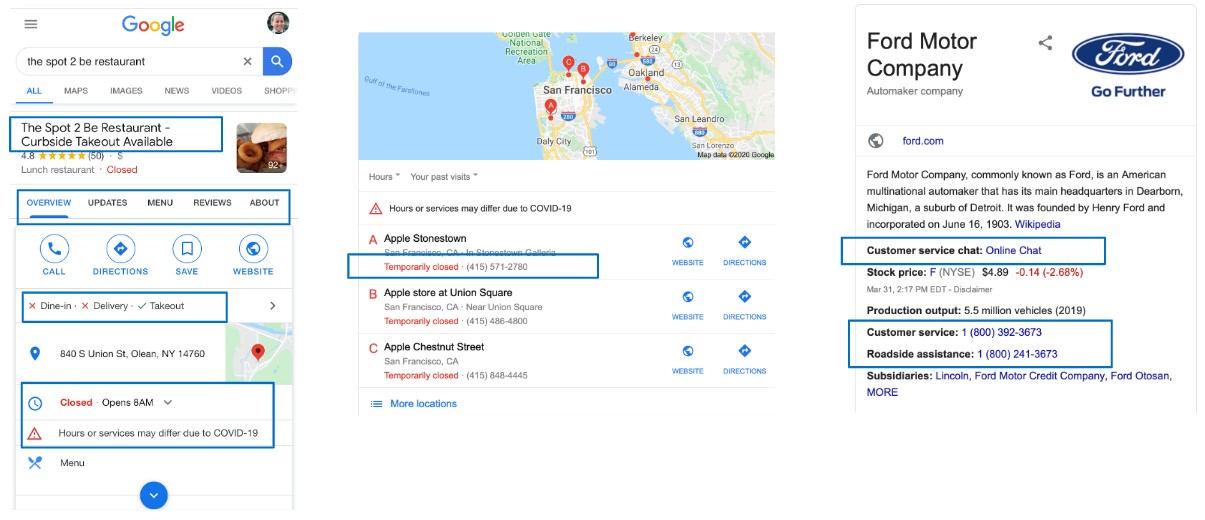
If you do not control your local listing or knowledge panel, Google may crowdsource information from users.
Case Study
Crisis: [Local & GMB Posts] Bank Case Study
Problem: Essential bank service needs to change business hours frequently and communicate with customers.
Solution: Milestone changed hours twice daily and posted thousands of Google Posts in GMB.
Results:
- GMB views up 10X.
- GMB actions up 31%.
- Calls up 63%.
4. AMP
Accelerated mobile pages (AMP) load faster leading to higher mobile visibility, engagement, and conversion.
AMP is Google’s format for enhancing the speed of the website. An AMP site has an image on Google’s Servers and results in a fast user experience.
Milestone has done more than 4,300 AMP deployments in the past three years and they have:
- Seen a difference of 10X on speed for site load times (less than 1s vs. close to 10s).
- Observed higher search visibility and higher clicks on AMP sites (likely related to better user experience, as Google states that they do not give higher rankings to AMP sites).
The most common problem they have encountered is the de-synchronization of content between desktop and mobile which may damage ranking and traffic.
5. FAQs & Voice Solutions
You can also use frequently asked questions (FAQs) and voice search to increase visibility.
Crisis-stage FAQs complement evergreen FAQs.
Use online and offline sources to identify questions your customers have.
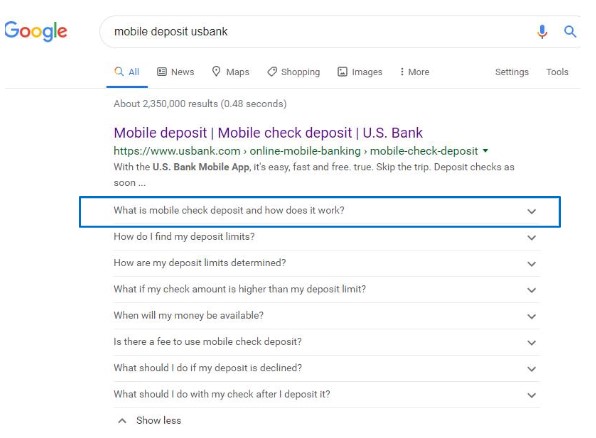
There are three elements to ensure your FAQs get picked up.
- Create an FAQ content on your website that talks about the questions that you know the public is asking about you.
- Make sure your website is technically sound (i.e., check mobile site speed and schemas).
- In terms of voice search is you want to create actions and skills on Alexa and Google Assistant.
Pitfalls to Avoid
Here are some common pitfalls to avoid as you go through the crisis and recovery phases:
- Missing signals from your customers.
- Lack of schema or schema errors.
- Not saturating the SERP with various asset types, channels.
- Mobile speed score below 65.
Takeaways & Things to Do in Crisis & Recovery Phases
Focus on these tactics in the beginning phases of your CRG process to help your business stay proactive in these times of uncertainty:
- Create and test new offers.
- Update local, publish Google posts.
- Launch or update FAQs.
- Deploy, fix, and update schemas.
- Use AMP on key pages.
[Video Recap] SEO After COVID-19: How to Recover with FAQs, Schema, AMP & Voice Search
Watch the video recap of the webinar presentation and Q&A session.
Or check out the SlideShare below.
Join Us For Our Next Webinar!
The Data Reveals: What It Takes To Win In AI Search
Register now to learn how to stay away from modern SEO strategies that don’t work.
Image Credits
All screenshots taken by author, April 2020




